What if I told you the smartphone you’re about to buy could transform your daily life more than any device before? This isn’t just another gadget upgrade—it’s a lifestyle revolution.
With the speed of technology advancing at a breakneck pace, choosing a smartphone today is more crucial than ever. Missing out on the right choice could mean falling behind in a world where digital connectivity dominates.
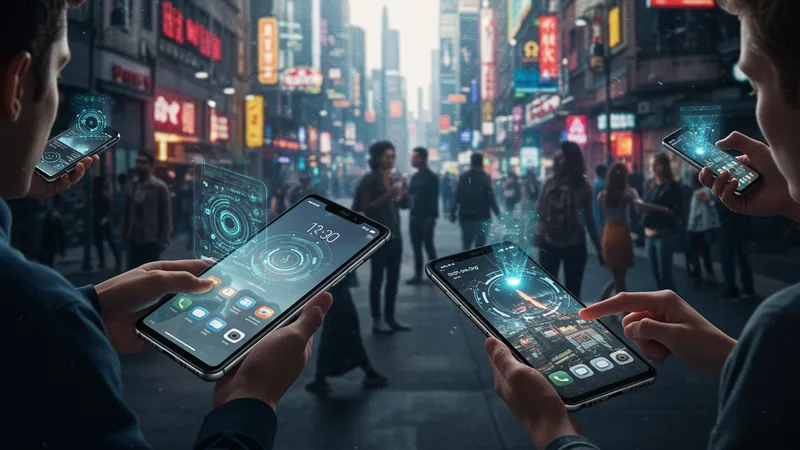
The smartphone market is a battleground where new features and specs fiercely compete for consumer attention. For instance, did you know that the latest models can seamlessly integrate with smart home devices, anticipating your needs before you even realize them? Your phone could turn on your lights and start brewing coffee before you step out of bed. But that’s not even the wildest part…
While many focus on specs like screen size and battery life, the most game-changing updates lie in AI functionality. Phones now learn your habits, optimizing performance and battery usage in ways that were unimaginable just a few years ago. Imagine a device that adapts to your lifestyle, making daily tasks almost intuitive. But what happens next shocked even the experts…
Have you ever wondered why some users seem infinitely more productive with their smartphones? The real game-changer here isn’t just on the surface; it's in the form of voice-activated assistants. Once viewed as a novelty, these assistants have now become indispensable by learning speech patterns and offering personalized suggestions. Yet, the most compelling aspect is their rapidly increasing ability to handle complex tasks. It’s no longer science fiction—phones are effectively becoming portable secretaries. But there’s one more twist…
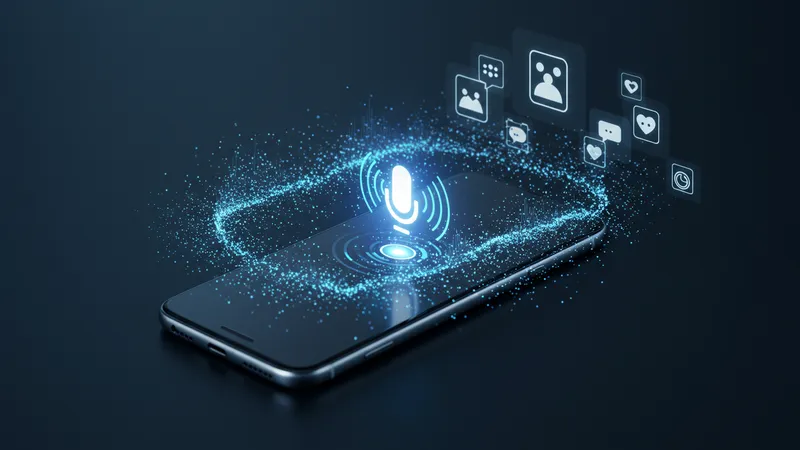
Another overlooked revolution is how these devices are catering to our emotional intelligence. Features like emotion recognition in photography and apps tailored to improving mental health are quietly taking over, offering insights into our emotional states. This part of the industry is growing rapidly as companies scramble to humanize technology. This may soon lead to an era where your device knows you better than you know yourself. What you read next might change how you see this forever.
Consider the emerging focus on sustainability—a talking point for tech giants. More brands are investing in ethical sourcing and greener production methods, making eco-friendly phones a trend to watch. But beyond marketing, these efforts are beginning to shape consumer expectations. Can a phone really help save the planet? The potential progress in this area is poised to surprise everyone.
Moreover, if battery life is your primary concern, you’re not alone. Recent innovations in fast-charging technology have left many consumers wondering if carrying a power bank is becoming obsolete. Imagine topping up your battery in just minutes instead of hours. The trade-offs and benefits of these fast-charging technologies are often surprising, and the upcoming pages will delve deeper into the intricacies.
The age-old gripe about smartphone battery life might finally see an end. Engineers worldwide are experimenting with faster, more efficient charging solutions. For instance, think about the current developments in solid-state batteries which promise longevity and rapid charge cycles. This isn’t just an incremental improvement—some claim we’re on the brink of a golden era of battery technology. However, what you discover about its potential might astonish you.

Moreover, solar-powered charging cases are making a quiet entrance, allowing phones to re-energize by harnessing the sun’s energy. Although the concept is not entirely new, recent advancements have significantly improved their efficiency and viability. Some even suggest this could be the future for powering remote and off-grid locations. But the innovation doesn’t stop there—what comes next could redefine how we perceive mobile autonomy.
In a surprising twist, companies are also focusing on software optimization to extend battery life even further. AI-driven battery management systems are learning users’ habits, shutting down unnecessary background processes, and conserving power in ways that were previously unattainable. This means smarter, longer-lasting energy usage without any manual intervention. Could this be the beginning of a new energy-efficient era for smartphones?
The final piece in this electrifying puzzle is the trend towards modular phone designs. Enabling users to easily swap and replace battery modules is gaining traction and could upend traditional smartphone lifespan discussions. Imagine upgrading your battery instead of purchasing an entirely new phone. While this may sound futuristic, it holds real potential to shift consumer habits. As we uncover more, the implications could be monumental.
It’s no secret that camera advancements fuel much of the excitement in the smartphone world. From night photography that mimics the human eye to capturing cinematic-smooth video, these advances are nothing short of extraordinary. Take, for example, the ultra-zoom features that allow you to capture breathtaking details from kilometers away. This is almost science fiction turned reality. But wait till you learn about the real eye-open: the AI-driven editor lurking within.
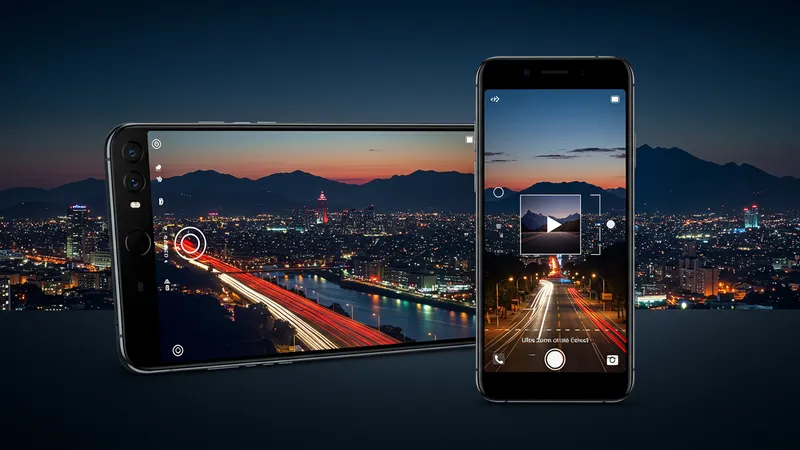
Up next on the radar is the stunning progress in computational photography. Phones now integrate multiple images taken at different exposures into one flawless result. This isn’t just about taking better pictures; it represents a shift towards a professional-grade experience in the palm of your hand. Forget DSLRs—your next vacation photoshoot could solely depend on your smartphone. There's more to this narrative, and it’s a game-changer.
Selfie technology is also reaching unprecedented levels of sophistication. With augmented reality filters and beautification modes becoming more advanced, users can create studio-quality shots effortlessly. But the magic really happens behind the scenes with machine learning enhancing every aspect of image processing. This capability is revolutionizing social media culture as we know it. The ‘picture-perfect’ era has officially arrived!
Finally, you might be surprised to know about the rising trend of integrating multiple sensors for unprecedented photo quality. Lidar sensors, for instance, are being deployed to create depth maps that transform portrait modes and AR applications. The confluence of these technologies offers a tantalizing glimpse into the future of smartphone photography. The possibilities are endless, and we’re just beginning to scratch the surface.
The arrival of 5G was heralded as the gateway to a hyper-connected future, and it hasn’t disappointed. We’re witnessing download speeds that make buffering a relic of the past while ushering in seamless streaming experiences that revolutionize entertainment consumption. As 5G expands its reach, expect formerly unimaginable possibilities. But within this evolution, there lurks an even more groundbreaking surprise in connectivity.
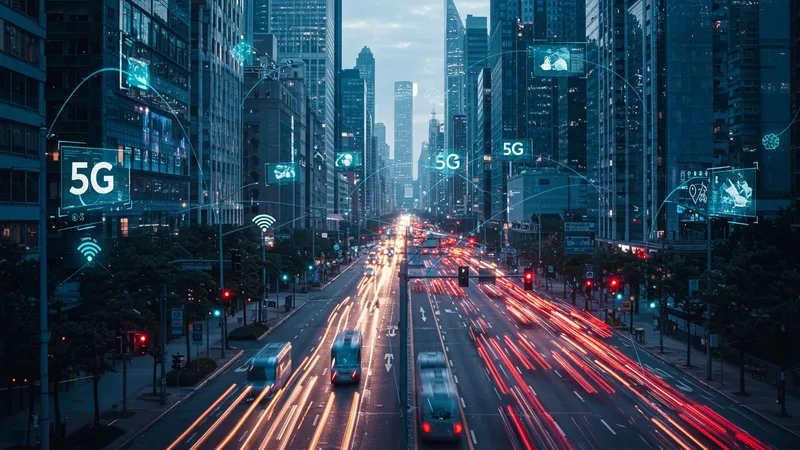
One arena where 5G has yet to fully show its prowess is smart cities. With ultra-reliable and low-latency communication, we're moving towards a world where traffic lights are smarter, public transport is more efficient, and everything is woven into an intelligent urban fabric. This isn’t merely a far-off concept; trials are underway aiming to transform our cities into living, breathing entities synchronized through technology. The landscape of modern living might never be the same.
But that’s not all. The development of satellite internet aims to bridge the digital divide by bringing connectivity to the world’s most remote areas. While projects like Starlink are in their infancy, they hold promise to redefine internet accessibility, opening doors to untapped potential in far-flung communities. Indeed, digital isolation could soon become obsolete. The full extent of off-world connectivity is even more captivating.
Lastly, advancements in connectivity are also fostering incredible changes in mobile gaming. Now, lag-free cloud gaming experiences on mobile devices are becoming a reality—a far cry from the graphically-challenged games of yesteryears. The pairing of 5G with powerful hardware brings console-level gaming to your mobile device, democratizing access to exhilarating entertainment purely on demand. This could rewrite the playbook for an industry steeped in tradition.
Remember the phones depicted in classic sci-fi movies? Those futuristic foldable screens are now a reality, and they’re generating significant buzz. With screens that stretch the limits and alter size on command, they evolve into a tablet or shrink back into a phone with ease. The marvel is not only in the design but also in the technological leap that this represents. What's next for these shapeshifters could change our digital experience forever.
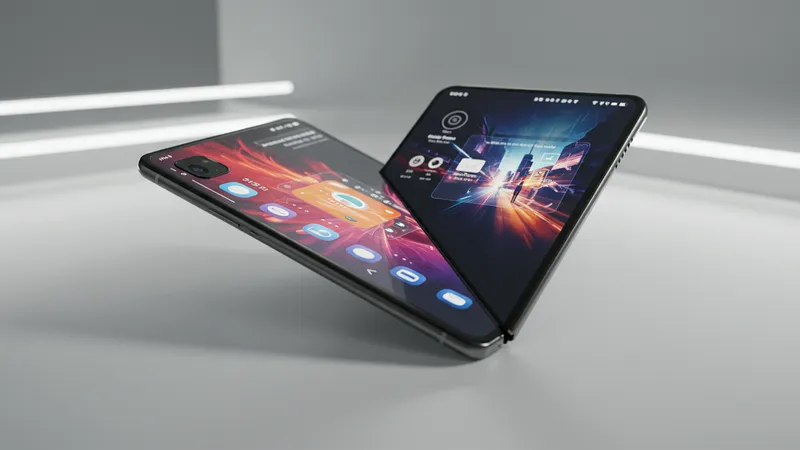
The unique form factor of foldable phones offers a versatile user interface, turning multitasking into an art form. Dual-screen usage and flexible display capabilities have revolutionized productivity, catering to professionals on the go. Moreover, they introduce new possibilities for gamers and streaming enthusiasts, as split-screen functionality takes entertainment to the next level. But the secret sauce of foldables might surprise you even more.
Engineered to handle countless folds, the technology behind resilient hinge mechanisms is both robust and delicate. The material science breakthroughs necessary to achieve this are nothing short of a technological masterpiece. As companies strive for lighter, more durable builds, the race to refine foldable designs is heating up, hinting at an array of possibilities where technology meets imagination.
However, one surprising benefit of foldables is their potential to minimize environmental impact. By converging multiple devices into one, the need for separate tablets and e-readers is reduced. This lessens electronic waste significantly, showcasing a sustainable side to the innovation once dismissed as a mere gimmick. With this unexpected environmental advantage, foldables are positioning themselves as guardians of our planet. As strategies continue to unfold, the future of technology may very well hinge on this evolution.
With digital breaches reaching headlines frequently, smartphone makers have intensified their focus on security and privacy, diving deep into ensuring user data protection. But what’s really catching attention is beyond mere passcodes; it’s bio-authentication like iris and fingerprint scanners evolving with complex patterns that can offer truly exceptional security. Hold your excitement, because the story doesn’t end here.

Surprisingly, one notable innovation in this domain is privacy mode cameras. With one tap, cameras automatically shield themselves from any unauthorized operations unless prompted by the user. It allows content creators to protect intellectual property and ensures that your private moments remain uninterrupted. This represents a formidable line of defense in an age of digital surveillance and gives users peace of mind.
Moreover, advanced app permission systems are quietly gaining ground, offering transparency and control over data access. Users now have the capability to monitor, modify, and limit what apps can do with information, often set in real-time. It's like having a gatekeeper for each application's privilege to your data, ensuring a sound night’s sleep uninterrupted by privacy concerns.
Finally, decoy mode and compartmentalized storage options are reshaping the landscape. These features provide virtual spaces within your phone, securing sensitive information behind digital vaults, and ensuring that even if your device lands in the wrong hands, your data might not. Such innovations offer a vault-like assurance and are becoming a must-have for the privacy-conscious crowd. What lies ahead has the power to redefine personal security.
In the world of smartphones, personalization goes far beyond wallpapers and ringtones. It extends into deep customization that tailors the entire user experience to individual preferences. Starting from apps that adapt layouts based on usage to AI-generated themes, smartphone experiences are as unique as fingerprints. However, there’s another layer to personalization that few have anticipated.
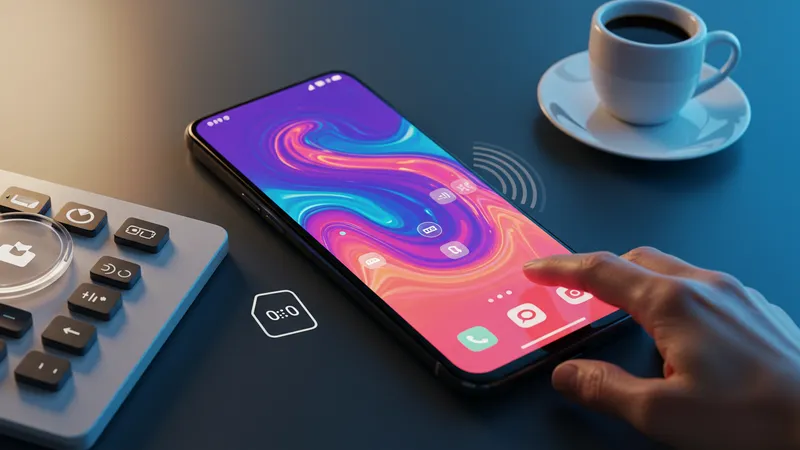
Imagine smartphones that adjust based on vocal commands to alter settings and execute tasks seamlessly—this isn't a dream merely for tech enthusiasts. It's rapidly becoming a staple feature, enabling users to navigate their devices in an intuitive, hands-free manner. These innovations are gaining traction, reshaping how we interact with our digital assistants daily. Yet, what else personalization can offer remains to be seen.
More interestingly, predictive algorithms are stepping into the multitasking field. From foreseeing apps you might want to open next to predicting your schedule’s busy hours, phones are noticeably turning into sixth senses. They’re optimizing energy usage, providing reminders when your calendar aligns with tasks, and offering updates exactly when needed. But there’s more under this predictive curtain.
Lastly, customization is no longer just about the superficial. With customizable widgets and personalized AI suggestions, users can curate a device experience without limits. From monetizing hobbies to enhancing productivity, the sky is truly the limit with these innovations. As we uncover more in this quick-paced landscape, prepare to see a new era where tech truly meets taste.
For many, choosing the right smartphone isn’t only about features but also the cost involved. Budget-friendly alternatives have transformed from lesser options to powerhouses in and of themselves. Phones packed with flagship-caliber specs without the flagship price tag seem increasingly common, disrupting the market dynamics significantly. But there’s a more intriguing factor in play.
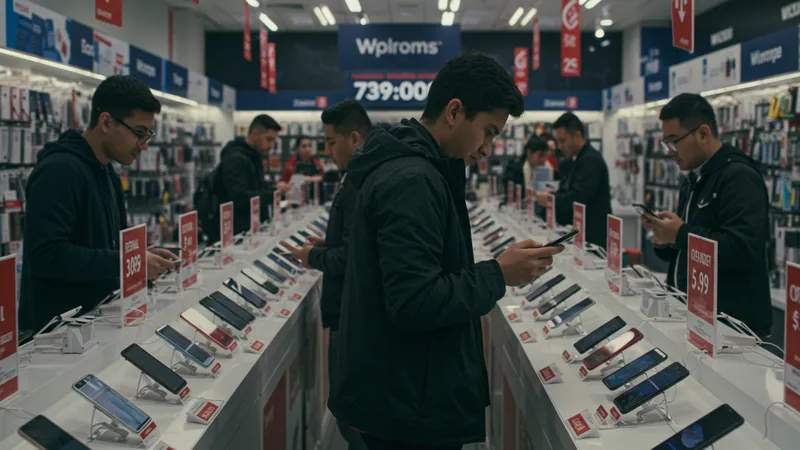
Rental and subscription models have cropped up, offering tech enthusiasts the ability to frequently upgrade without a hefty upfront investment. This change sparks a considerate dialogue on ownership versus access, and its implications for the consumer tech industry are profound. Exploring this approach could save consumers hundreds while keeping them on the cutting edge. Ready to delve deeper?
Trade-in programs and financing solutions are skyrocketing in popularity by giving users the chance to upgrade old tech for new devices while easing financial burdens. These initiatives redefine the notion of affordability and serve as pathways to obtaining premium devices in an economically viable fashion. Yet, an even bigger financial innovation emerges.
The advent of smartphone cashback apps that offer returns on purchases is becoming a surprising player in this arena. While initially minor, they’re quickly gaining momentum, turning ordinary transactions into money-saving opportunities. As we dive deeper, these financial adaptations and incentives hint at an evolution in purchasing power. What's coming next, though, could shift the financial equilibrium.
The environmental footprint of a smartphone might be larger than you'd think. Mining rare earth elements and the manufacturing processes involved carry significant ecological costs. With greater awareness comes an imperative need to reevaluate our purchasing habits. What if I told you there’s a green alternative on the rise to combat this footprint?
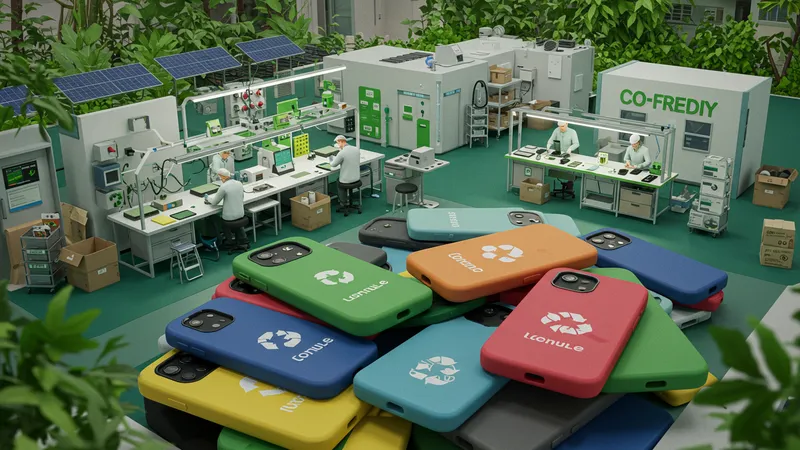
Companies are starting to innovate with eco-friendly materials and production methods. From recyclable materials to biodegradable phone cases, sustainability is transitioning from concept to action. Although this attempt might seem like a small drop in a large ocean, industry leaders are betting on greener alternatives. And that’s setting the momentum rolling with intriguing results.
Emission considerations are also driving optimizations. Brands are rethinking their supply chains and logistics to slash the carbon footprint. Additionally, energy-efficient manufacturing methods are not just corporate jargon tossed around—they’re crucial to corporate sustainability goals that realign production ethics to environmental needs. While results are promising, there’s more to uncover in this journey.
Finally, consider the circular economy models where phones are designed with reuse in mind. Modular designs emerging emphasize repairability, aiming to prolong device lifespan rather than dispose. Components are becoming recyclable, focusing on building a sustainable future by minimizing e-waste. As awareness and action grow, the prospect of eco-smart devices aligns with consumer demand for a conscientious purchase.
Smartphones are no longer exclusive to tech-savvy users; accessibility advancements are making devices inclusive and empowering. Take voice command systems designed for differently-abled users—these allow effortlessly seamless interactions. This significant progress ensures technology truly serves everyone. Read on as we delve into accessibility's untapped potential.
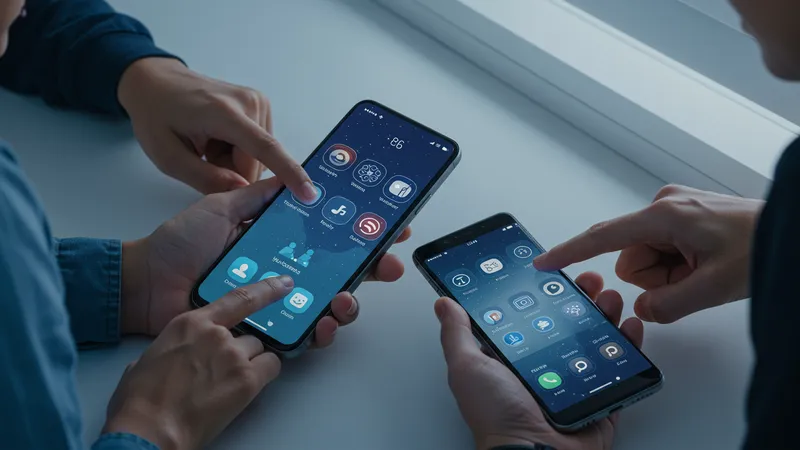
Further innovation is found in haptic feedback technology. Originally developed for gaming, haptic gestures are now providing tactile feedback to those with disabilities, enhancing navigational capabilities. Such subtle innovations pave new pathways in the user experience universe. So, what else lies undiscovered within this niche of inclusivity?
Screen readers are evolving with greater accuracy and integration, using machine learning to describe visual content dynamically. The goal is an intuitive and independent smartphone experience for visually challenged users. By leveling the playing field, technology is set to transform the way many interact with the digital realm. But the horizon of accessibility doesn’t stop here.
Lastly, customization settings for color-blind or visually impaired users are gaining sophistication. Enhanced contrast modes allow clarity of visuals with improved tale-telling elements, delivering a world accessible to different sensory needs. These pioneering efforts are not just programmatic achievements; they’re setting the stage for a more inclusive tech future. There’s still more to explore in ensuring no one is left behind.
Artificial Intelligence is casting an ever-expanding shadow across all facets of smartphone functionality. AI now powers everything from photography enhancements to predictive text, exponentially boosting efficiency. Its impact rolls far beyond current utilization, and the next leap in capability will get even more fascinating.
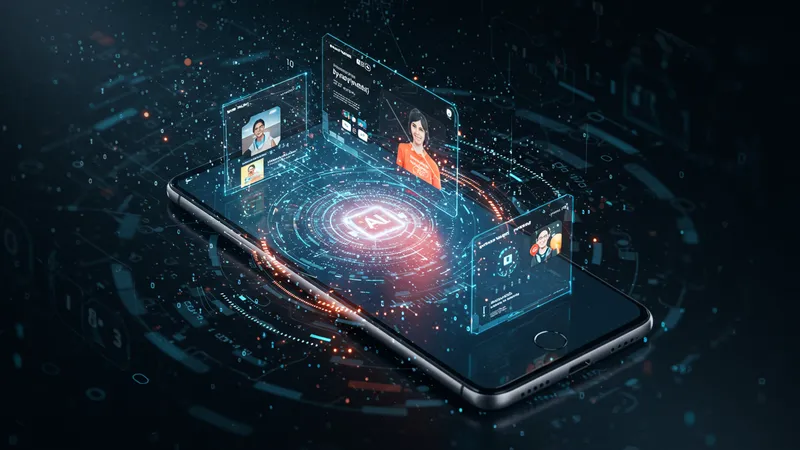
AI-driven virtual assistants are becoming miraculous, learning to understand nuanced instructions and delivering intuitive responses. As they evolve, these assistants are bound to transform smartphones into more personalized devices, offering more natural interactions. But hold on—AI's potential reaches beyond personal conveniences.
Predictive AI software is enhancing smartphone security by identifying threats in real-time. Through proactive intervention and behavioral analysis, it intelligently preempt potential breaches, keeping data a step ahead of malicious attempts. This digital armor fortifies not just privacy but peace of mind too. More beyond this will raise the stakes further.
The fusion of AI with augmented reality applications unveils untapped territories. Envision educational settings where AR, guided by AI, crafts personalized learning ecosystems tailored to individual progress. The convergence of these disciplines is poised to revolutionize how knowledge is consumed. There’s a soaring upward trajectory here, revealing exciting glimpses into the future.
The choice between different smartphone operating systems can spark passionate debates. Ranging from Apple's cohesive ecosystem to Android’s unparalleled customizability, both sides of this operating system war hold unique appeals for users. Yet, the clash between them unfurls more intricate dynamics than you may realize.
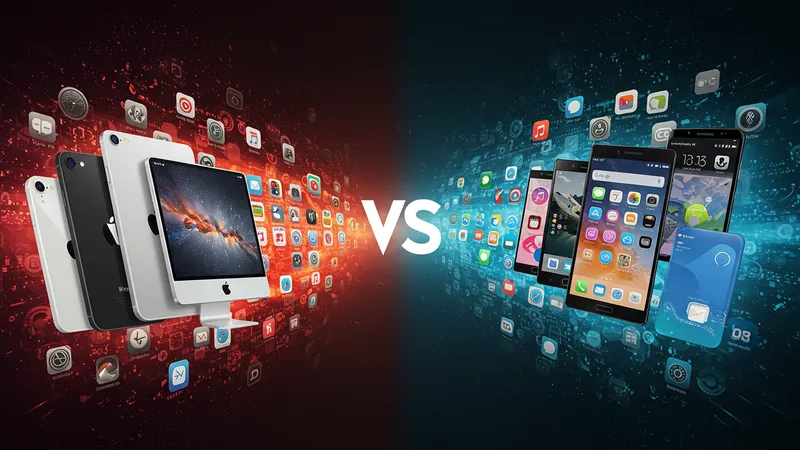
Apple's iOS offers seamless integration with its suite of products—such cohesion provides ease of use and workflow harmony that tech consumers find almost irresistible. Meanwhile, Android’s open-source environment encourages personalization previously unattainable on iOS. Which philosophy ultimately aligns with consumer priorities drives this intense rivalry.
Security and updates form another battleground. Apple’s iOS regularly rolls out timely updates, frequently praised for their consistency and swift patching efforts. Android, however, with its numerous manufacturers, experiences discrepancies—outlining challenges in uniformity within the expansive landscape. A deeper dive into solutions highlights unexpected measures taken by both camps.
In the culmination of these contrasting strategies, compatibility emerges as a critical factor that could reshape future decisions. Cross-platform interaction might start dictating the terms of engagement between iOS loyalists and Android advocates. As tech landscapes shift, the implications of operating system synergy loom large, transforming the consumer tech dialogue.
Assessing what the future holds for smartphones is both intriguing and unpredictable. As the line between hardware and software blurs, emerging innovations suggest smartphones could become the nucleus for various life aspects. But the reality of such evolution is far-reaching and potentially staggering.

With the rise of AI and machine learning, future smartphones could automatically manage everyday tasks, adapting to individual user needs over time. It envisions a world where devices don't just anticipate actions but respond to emotions. This comprehensive transformation offers glimpses into a hyper-connected existence that even sci-fi couldn’t imagine.
Convergence remains a promising frontier. Imagine a smartphone seamlessly interacting with other personal gadgets, centralized around user experience. From health monitoring to home automation, integration could redefine ease and convenience, converging disconnected tech into a singular ecosystem. Prepare for the beyond-convenient lifestyle.
Finally, think of sustainable practices underpinning next-gen devices through machine learning-driven recycling schemes and biodegradable designs. Society enters an era balancing scope with responsibility. The impetus closes the loop, making headway plans underpinned by respect and sustainability—ushering an exciting phase for technology and its role in our lives.
The smartphone you choose today is no longer just a device; it's a passport to a connected, intelligent world. Each innovation spurs another revelation, unlocking capabilities that redefine personal and societal boundaries. But which path shapes your digital journey? That remains uniquely yours to explore. So share, bookmark, and embark on this adventure of discovery, and remember—your pocket holds a universe waiting to unfold.